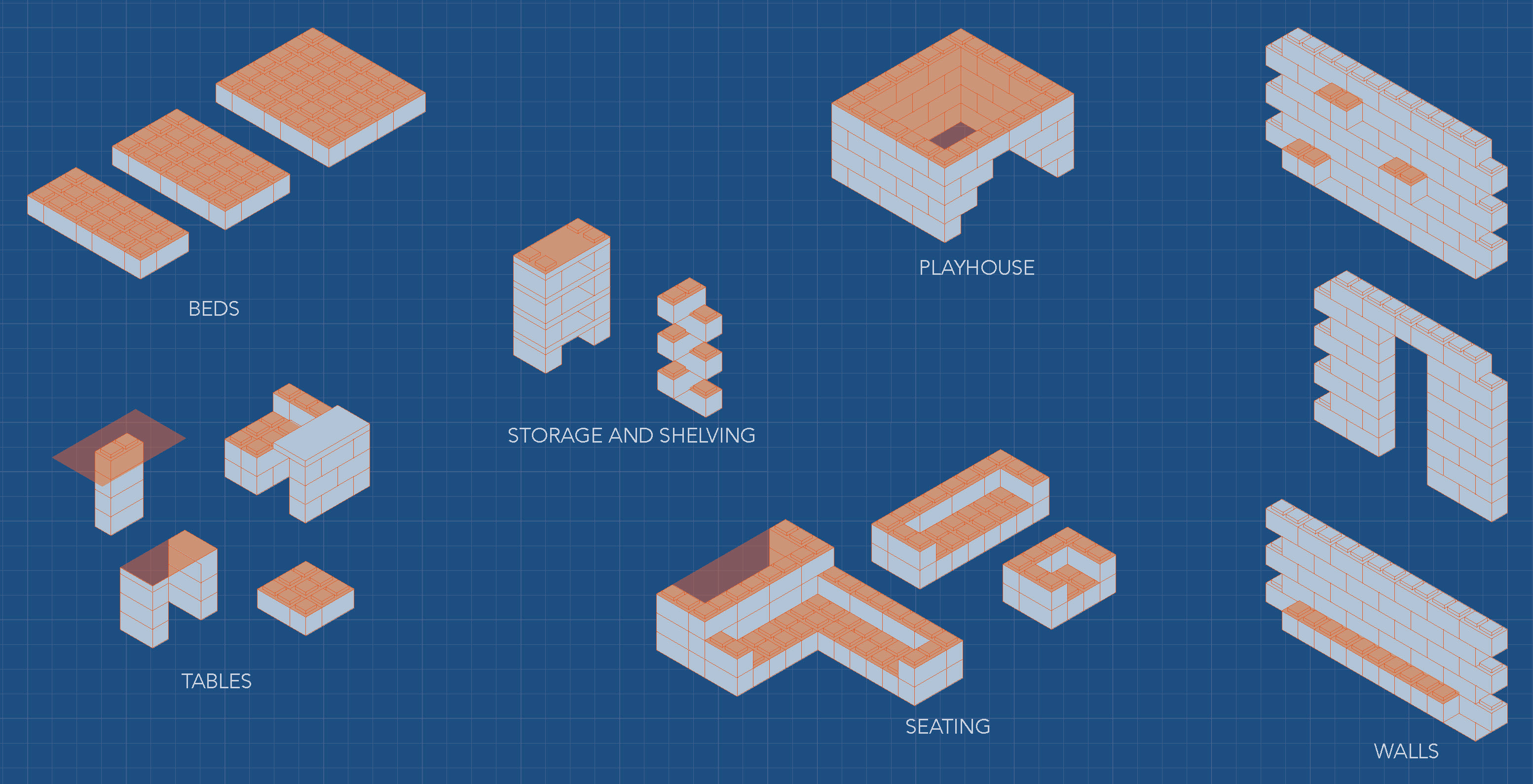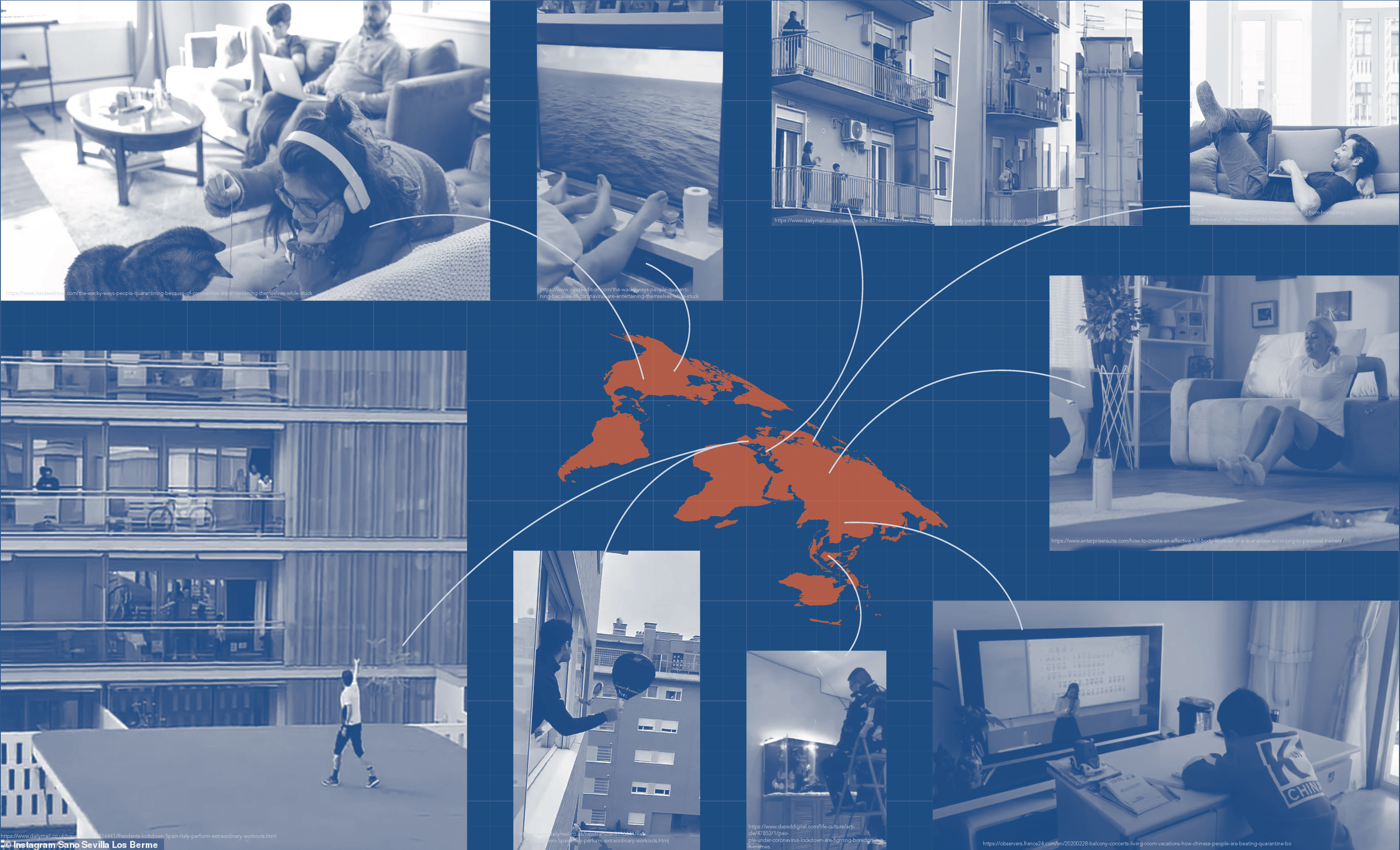︎ New Thresholds
A response to self-isolation on its impact on intergenerational needs through flexible interior interventions.
By Nick Hennessey ︎

When framed in today’s context, physical isolation can be beneficial for physical health on the global scale to minimize the spread of COVID-19 but can create serious consequences on mental health amongst all generations through existing interior spaces and their lack of change. Space no longer needs to serve a static function and the proposal NEW THRESHOLDS illustrates how more flexible space is needed rather than more space in general with the aim to improve an individual’s mental health and begin to change isolating environments.


The project design utilizes a system-based approach to the reconfiguration of space which allows users to reshape, adapt, and evolve their living environments to their everchanging needs. NEW THRESHOLDS builds upon a grid, where a 1’ x 1’ base is used to construct three-dimensional structures. The blocks stack and lock into place. In order to ensure structural supports, staggering the steams similar to a façade of brick is needed. Just as the standard creates a rigid framework, it is through standardization of these modules that the scalar implications are limitless. The scenarios below illustrate how the blocks can be utilized to reconfigure one’s space into furniture selections of beds, tables, storage, and seating as well as wall constructions and ‘tent’ like spaces. Through the research, people’s needs and wants change on a daily basis, but also as one age the same can be applied.




Activities that can be done in spaces that were not necessarily intended for such as a previous space used for dining can become an exercise space to stay active to a living space being reconfigured to accommodate more people or create separation. This separation could be used in today’s context for people who need to isolate themselves in shared unit facilities. A one-bedroom unit could be converted into a two-bedroom unit, adjusting to the needs and time of the users. New thresholds can be identified within the existing framework which architecture and the urban realm provide. The system can begin to evoke a change of spatial environment, counteracting one’s boredom in a period of isolation, to allow curation of a new environment.

COVID-19 and Architecture / 2020
Design to Outcomes
NEW THRESHOLDS offers a prototype in designing flexible interior environments that allow users to reshape, adapt, and evolve to their everchanging needs with the aim in improving individual’s mental health. Every human is unique; unique in their spatial functions, wants, needs, and so much more. This impacts the concept of place within the interior realm, having architectural and urban environment implications. It creates new thresholds of spatial conditions where users can connect, work, live, and play to serve as a prototype for the design industry to move forward in designing for isolating environments.
︎
Works Cited
1. https://www.cdc.gov/coronavirus/2019-ncov/cases-updates/cases-in-us.html
2. https://www.theguardian.com/cities/2017/feb/03/skyscrapers-vanity-height- graphics-numbers#maincontent
3. https://www.foundryloftsannarbor.com
4. https://www.insideedition.com/the-wacky-ways-people-quarantining-because- of-coronavirus-are-entertaining-themselves-while-stuck
5. https://www.apa.org/monitor/2019/05/ce-corner-isolation
6. https://www.washingtonpost.com/outlook/2020/04/17/boredom-social- distancing-quarantine/?arc404=true